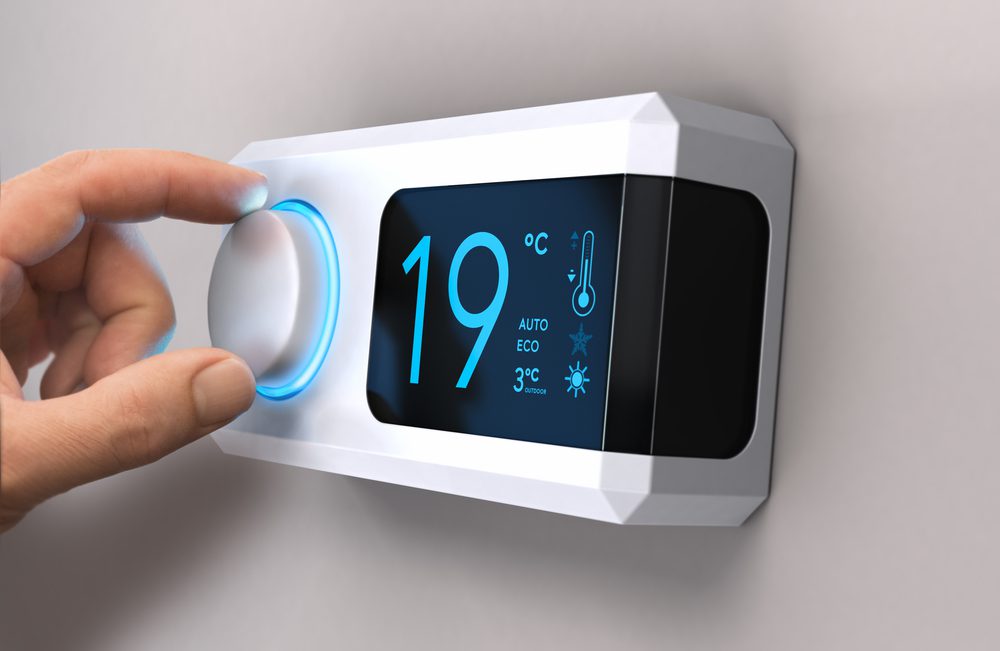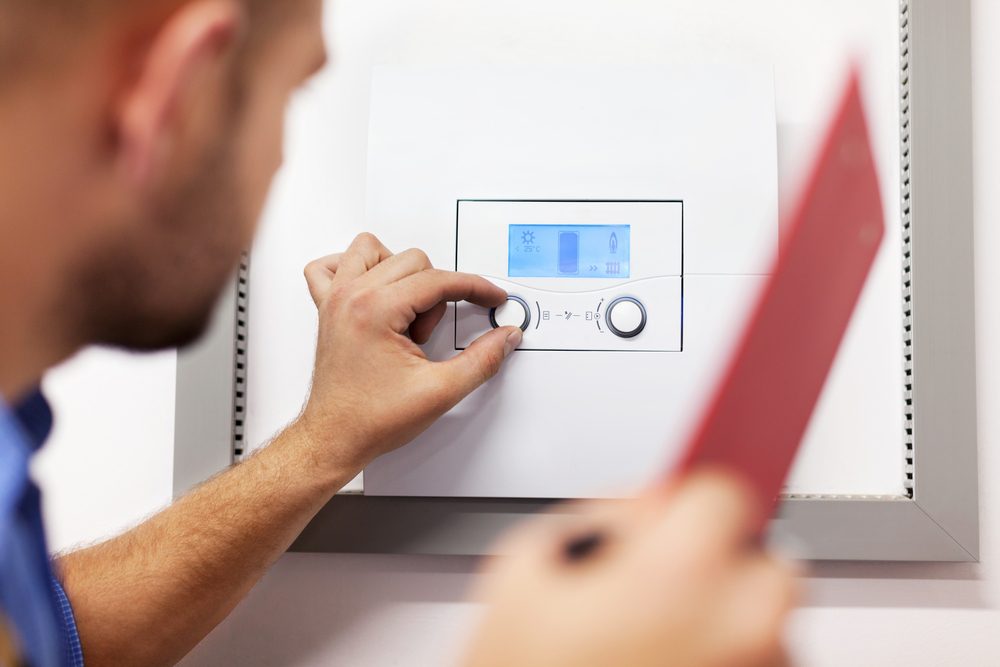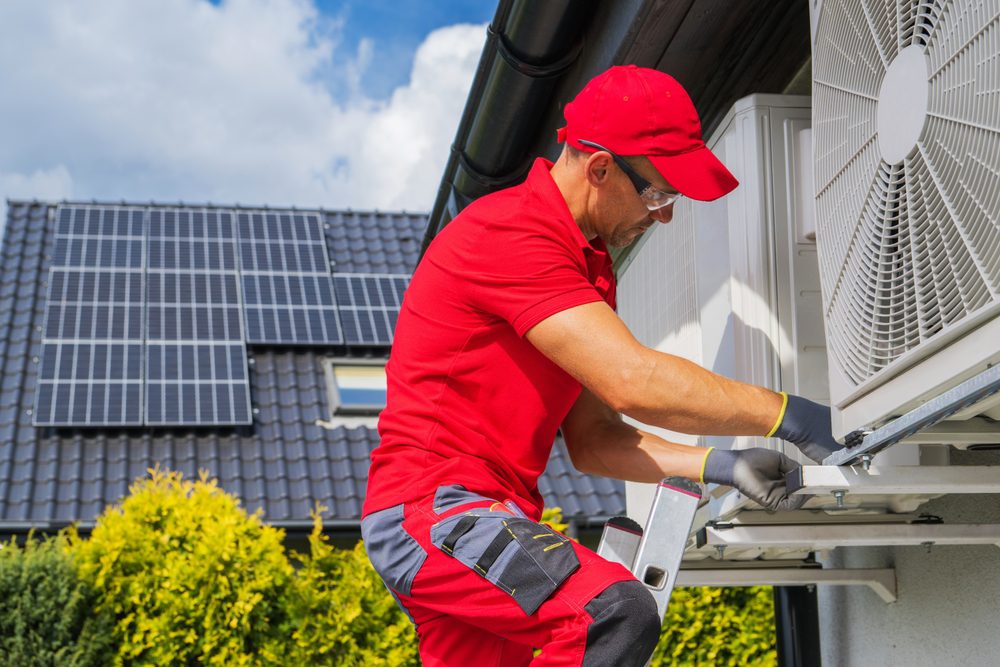Home heating systems are made to increase the temperature inside a house, by taking thermal energy from a specific fuel source, then moving it into all living spaces.
There are many types of systems that are used to provide heat in residential homes, and each type comes with its own specific variations. For example, some HVAC systems have the same components as the home’s cooling equipment, some work on their own, and some provide both heating and cooling. HVAC is short for heating, ventilation, and air conditioning.
This term is particularly used to describe the overall climate control system in any home, and it refers to both the heating and cooling equipment. No matter which type of HVAC system you’ve installed, the whole idea that comes with the heating appliances is to use a special type of fuel that will warm your home.
Heating systems could have a variety of fuel sources, such as natural gas, propane, fuel oil, biofuel, and solar, but also electricity. Some homes could have more than one heating system: you could have your basement heated with a different system than the rest of the house. Here, you will learn about the seven different types of heating systems, and how to decide which is the best option.

Forced air heating/ Cooling systems
Probably the most common HVAC system in North American homes is the forced air system. It uses a furnace with a blower fan, that pushed warmed air in various rooms of the home through a network of ducts.
Forced air systems can rapidly adjust to different room temperatures, and since the air conditioning system can have the same blower and ductwork, you get an efficient overall HVAC System.
It’s true that installing a brand new forced air HVAC system could cost you between $5,000 and $10,000. This is mainly based on the square footage of the home, and bigger houses require stronger units that could easily increase the costs.
Luckily, these systems can easily resist for 25 years, before needing replacement units. As fuel sources, you can use natural gas, liquid propane, fuel oil, but also electricity.
Gravity Air Furnace Systems
The father of forced air systems, gravity air furnaces can also distribute air through a system of special metal ducts. However, it doesn’t force the air via a blower, as it operates much easier than that, on the principle of warm air rising and cool air sinking.
Even so, the temperature adjustments could be slower, as the systems operate by simple convection currents. A gravity air furnace located in a basement will heat the air, which then will rise into different rooms through ducts.
Then, cool air returns to the furnace through a system of cold-air return ducts. If you’ve ever heard of the funny term “octopus” furnaces (which are usually found in old homes), then they were gravity air furnaces.
And since I’ve mentioned older homes, it’s worth noting that gravity air systems aren’t installed anymore, so the cost of keeping them is minimal. Gravity air furnaces could be easily fueled by natural gas, liquid propane, but also fuel oil.
They are rarely fueled by electricity, as these systems are much older and electricity was rarely used in those times.
In-Floor Radiant Heating Systems
Modern in-floor radiant heating generally involves plastic water tubing, which is then installed inside concrete slab floors or simply attached to the top or bottom of wood floors. It’s super quiet and very energy-efficient.
While at times, it might take a while until it properly heats and usually takes longer to adjust than forced air heat, it is super efficient and consistent. As maintenance could prove to be a bit of a hassle, because you have to reach into those hidden pipes, in-floor radiant heating units will last for many decades.
Radiant heating is completely different from forced air heating, specifically because it heats objects and materials, like furniture and flooring, rather than air.
The wide majority of whole-home radiant systems spread the heat via hot water that’s heated in a boiler or even in hot water heater. Even so, boiler-based systems can’t be combined with other types of air conditioning.
There could also be some in-floor systems that use electrical wiring installed under your flooring, and they’re usually made of ceramic or stone tile. As they are less energy-efficient than those hot water systems, they’re typically used in small rooms like bathrooms. While they’re very good at heating the floor to keep your feet warm, they’re not so efficient for the room itself.
Installing radiant floor heating could cost between $1,800 and $6,000, as costs usually decrease depending on how much square footage there is. As a general rule, how water tubing systems are heated through a central boiler, which can be then fueled by natural gas, liquid propane, or even electricity.

Traditional Boiler and Radiator Systems
Traditional boiler and radiator systems also have a central boiler that facilitates the circulation of steam and hot water through pipes, to different radiator units that are carefully placed around the house.
Older homes and apartment buildings in North America are often heated with this kind of system. The good-old radiator, which is a cast-iron upright unit that’s usually placed closer to the windows, is oftentimes known as a steam radiator, even if the term might be a bit inaccurate. However, in reality, there are two different types of systems that are used with these older radiators.
True steam boilers move the steam through pipes to all individual radiators, which then turn back into water and return to the boiler to be reheated. Modern radiator systems use hot water to radiators via electric pumps.
And if we’re talking about older steam boilers, hot water releases the heat at the radiator, and the cooler water then returns to the boiler to be reheated.
Hot water radiator systems are fairly common in Europe. If you want to try this system, you should expect to replace the boilers and radiators every other 10 years, and it will cost you somewhere between $3,700 and $8,200.
Hot Water Baseboard Radiator
There’s another modern form of radiant heat, which is known as a hot water baseboard system, also known as a hydronic system. It uses a centralized boiler to warm the water that moves through the water pipes system.
The water flows to other low-profile baseboard heating units, that later radiate the heat from the water into the room, using thin metal fins that circle the water pipe, and which are typically made of carbon steel.
This is basically just an updated version of the old upright radiator system. Hot water baseboard heaters are incredibly durable, and they only cost around $450 and $1,200 to install or even replace the older units.
Boilers used in this type of system are fueled either by natural gas, liquid propane, fuel oil, or electricity. Plus, they can be aided by solar heating systems.

Heat Pump Heating Systems
The latest home heating and cooling technology is the heat pump, which is based on a similar system to air conditioners that extract heat from the air and deliver it to your home via an indoor air handler.
The standard home systems are air-source heat pumps, as they usually draw heat from the outdoor air. There could also be some ground-source, geothermal, heat pumps that pull the heat from a deeper place in the ground, but also water-source heat pumps that need a pond or even a lake for heat. There’s another popular air-source heat pump type, which is known as the mini-split, or ductless system.
It has a relatively small outdoor compressor unit and one or more indoor handlers that are very easy to integrate into any room additions or even remote areas of a home. In fact, various heat pump systems are reversible, and they can be easily switched to air conditioning mode during summertime. Heat pumps are also extremely energy efficient.
However, you need to know that they only work in mild climates, and they’re less effective in places with extreme temperatures. These systems will last you a maximum of 15 years, and they cost $4,200 up to $7,300.
Electric Resistance Heating Systems
This system is best for users that you don’t use that often. Electric resistance systems, such as baseboard heaters, have become increasingly popular, mainly because they come with supplemental heating in some basements, home offices, and even seasonal rooms.
These heaters aren’t used as a primary source of heating, mainly because they cost a lot. Similar to in-floor radiant heat, radiant electric heaters warm the objects rather than the air.
Electric heaters are easier and highly inexpensive to install, as they generally cost between $450 and $1,200, and they don’t need any kind of ductwork, pumps, air handlers, or any other kind of distribution equipment.
The units are also inexpensive, don’t have any moving parts, and don’t need maintenance. As fuel sources, electric resistance systems are usually plugged into the home’s electrical circuits.
Deciding on the proper home heating system
When deciding on a new heating system for your house, it’s very important to make a list of pros and cons. For instance, in-floor radiant heating is a wonderful option for those who live in warmer climates, and don’t have to heat their home in freezing temperatures for months in a row.
In colder areas, forced air heating or even radiators could prove to be better, and provide more comfortable temperatures through the winter. Besides, the cost of replacing an outdated system might not be worth it, especially since there are more modern, energy-efficient options that could be installed.
In the majority of cases, the best thing you can do is contact a professional HVAC technician, that will help you begin the whole process.
If you enjoyed reading this article, then we have something else in store for you: Want a Kitchen Reno? 8 Best Tips To Fake One















